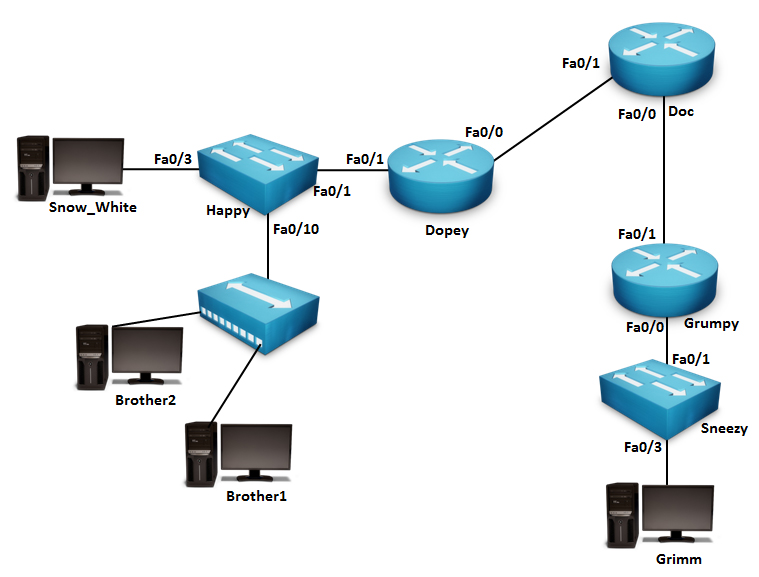IGRP – Interior Gateway Routing Protocol
The Interior Gateway Routing Protocol (IGRP) is an advanced distance vector routing protocol. Because it is a Cisco-developed routing protocol, only Cisco devices can utilize this protocol for routing purposes. Like RIP, it is a classful protocol; meaning that it does not send the subnet mask with routing updates. So, it cannot support VLSMs.
A router running IGRP sends an update broadcast every 90 seconds, by default. When an update from the originating router is not received within three update periods (270 seconds), it declares a route invalid. After seven update periods (630 seconds), which include the three update periods, the router removes the route from the routing table.
IGRP advertises three types of routes:
- Interior— Routes between subnets in the network attached to a router interface.
- System— Routes to networks within an autonomous system. The router derives system routes from directly connected network interfaces and system route information provided by other IGRP-speaking routers.
- Exterior— Routes to networks outside the autonomous system that are considered when identifying a gateway of last resort.The router chooses a gateway of last resort from the list of exterior routes that IGRP provides. The router uses the gateway (router) of last resort if it does not have a better route for a packet and the destination is not a connected network. If the autonomous system has more than one connection to an external network, different routers can choose different exterior routers as the gateway of last resort.
IGRP is an advanced distance vector protocol. Several features distinguish it from other distance vector routing protocols, such as RIP:
- Increased scalability— Improved for routing in larger networks compared to networks that use RIP, IGRP can be used to overcome RIP’s 15-hop limit. IGRP has a default maximum hop count of 100 hops, which can be configured to a maximum of 255 hops.
- Sophisticated metric— IGRP uses a composite metric that provides significant flexibility in route selection. By default, internetwork delay and bandwidth are used to arrive at a composite metric. Reliability, load, and MTU may be included in the metric computation as well.
- Multiple path support— IGRP can maintain up to six unequal-cost paths between a network source and destination, but only the route with the lowest metric is placed in the routing table. RIP, on the other hand, keeps only the route with the best metric and disregards the rest. Multiple paths can be used to increase available bandwidth or for router redundancy.

